Scaffolding Companies Chamblee
Best Scaffolding Erectors in Chamblee
Receive 3 FREE Scaffolding Specialists quotes for your project today! Compare profiles, reviews, accreditations, portfolio, etc... and choose the best deal.

Savannah Steel Scaffold Co Inc
4.817 reviews615 Stiles Avenue, Savannah, 31415-3105, USAt Savannah Steel Scaffold, we pride ourselves on providing top-notch scaffolding solutions to the Savannah community. With over 20 years of experience in the industry, our team of experts has the knowledge and skills to tackle any project, big or small. We're fully accredited and insured, ensuring that you can trust us to get the job done safely and efficiently. Whether you're a contractor, builder, or homeowner, we've got you covered. Contact us today to learn more about our services and how we can help you achieve your goals.
- Services
- Why Us?
- Accreditations
Get Quote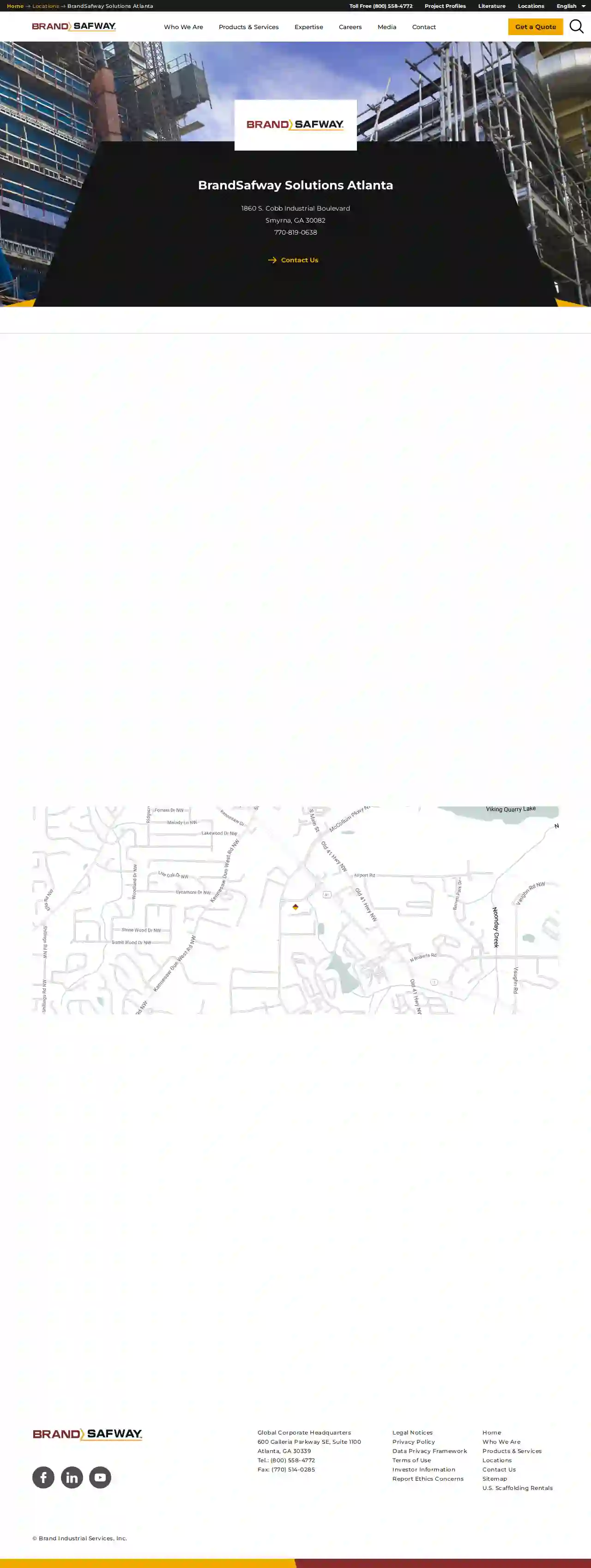
BrandSafway Solutions Atlanta
3.85 reviews3555 Clairmont Rd, Atlanta, 30349, USBrandSafway is a leading provider of access solutions and industrial services in Atlanta, Georgia. With a strong commitment to safety, quality, and customer satisfaction, we offer a wide range of services to support our clients' projects. From scaffolding and hoisting to insulation and coatings, our team of experts is dedicated to delivering innovative solutions that meet the unique needs of each project. At BrandSafway, we pride ourselves on our ability to provide customized solutions that meet the specific requirements of each project. Our team of experienced professionals works closely with clients to understand their needs and develop tailored solutions that ensure successful project outcomes. With a strong focus on safety, quality, and customer satisfaction, we strive to build long-term relationships with our clients and deliver exceptional results.
- Services
- Why Us?
- Accreditations
- Our Team
- Testimonials
Get Quote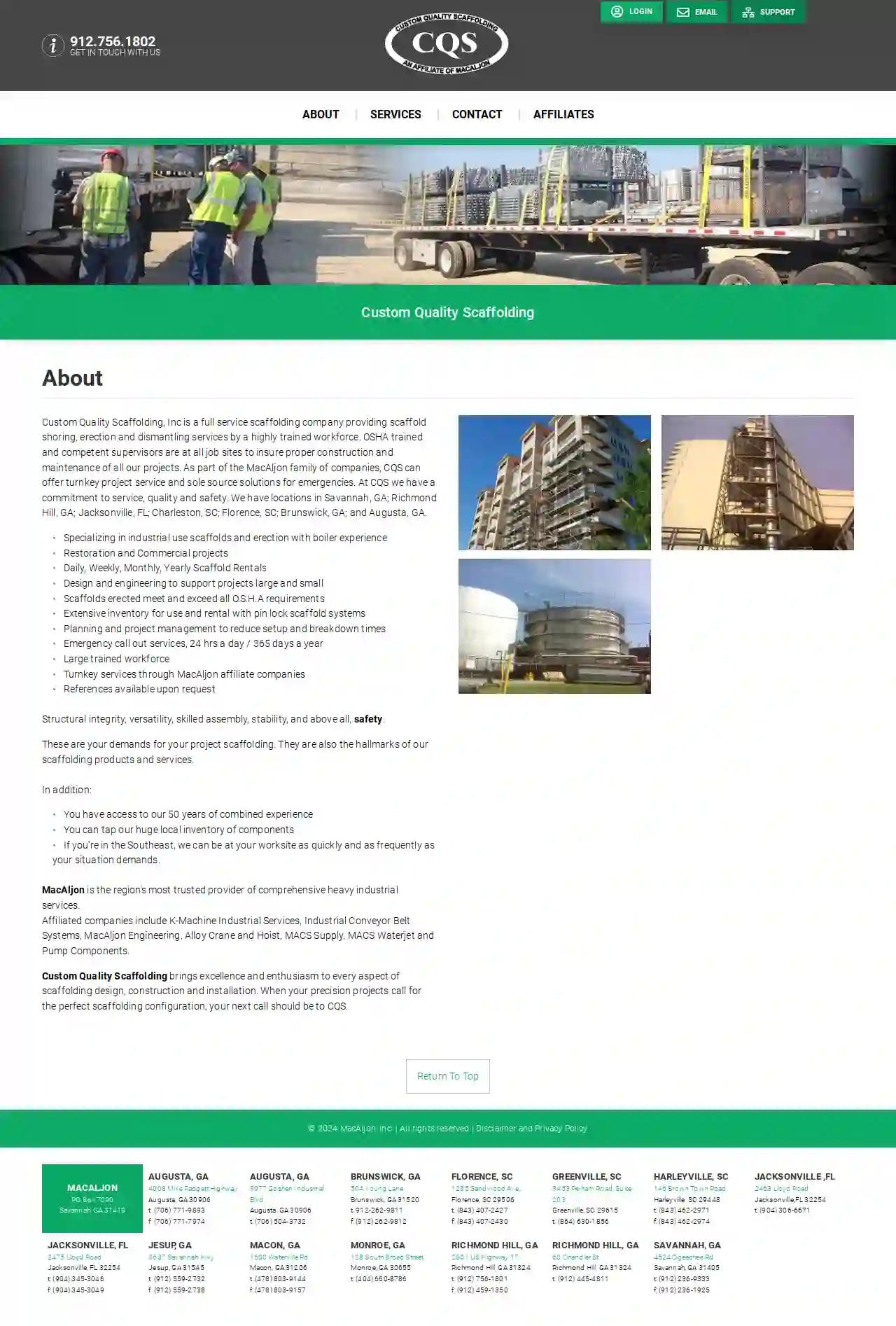
Custom quality scaffolding
52 reviews4524 Ogeechee Rd, Savannah, 31405, USAt MacAljon, we're a family of companies dedicated to providing comprehensive heavy industrial services. Our team at Custom Quality Scaffolding brings excellence and enthusiasm to every aspect of scaffolding design, construction, and installation. With over 50 years of combined experience, we offer turnkey project services and sole source solutions for emergencies. Our commitment to service, quality, and safety is unwavering. We have locations in Savannah, GA; Richmond Hill, GA; Jacksonville, FL; Charleston, SC; Florence, SC; Brunswick, GA; and Augusta, GA. Our services include scaffold shoring, erection, and dismantling, as well as daily, weekly, monthly, and yearly scaffold rentals. We also offer design and engineering to support projects large and small, and our scaffolds are erected to meet and exceed all O.S.H.A requirements. With a large trained workforce and extensive inventory for use and rental, we're equipped to handle any project. Whether you're in the Southeast or beyond, we can be at your worksite as quickly and as frequently as your situation demands.
- Services
- Why Us?
- Accreditations
- Our Team
- Testimonials
- Gallery
Get Quote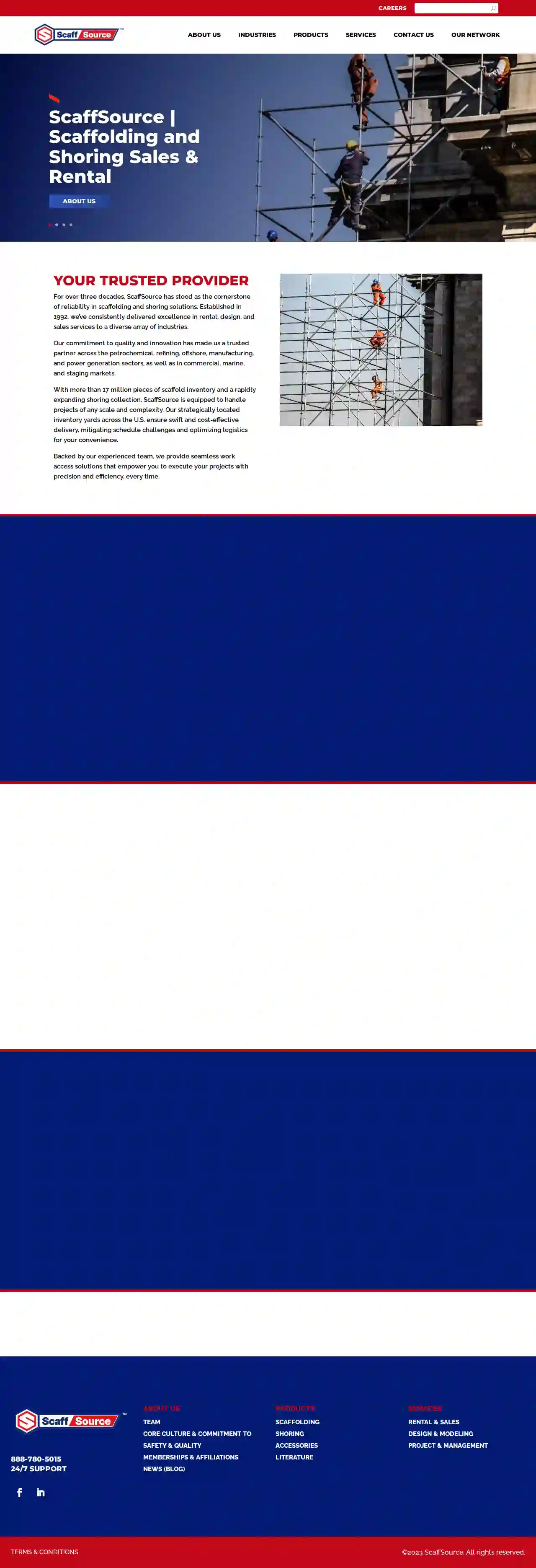
SCAFFSOURCE
Columbus, USScaffSource is a premier provider of scaffolding and shoring equipment sales and rentals, serving various industries since 1992. With over 17 million pieces of scaffold inventory and a growing shoring collection, we deliver excellence in rental, design, and sales services. Our strategically located inventory yards across the U.S. ensure swift and cost-effective delivery, mitigating schedule challenges and optimizing logistics for your convenience. Our commitment to quality and innovation has made us a trusted partner across the petrochemical, refining, offshore, manufacturing, and power generation sectors, as well as in commercial, marine, and staging markets. We provide seamless work access solutions that empower you to execute your projects with precision and efficiency, every time.
- Services
- Why Us?
- Accreditations
- Gallery
Get Quote
SCAFFSOURCE
51 reviewsAtlanta, USFor over three decades, ScaffSource has stood as the cornerstone of reliability in scaffolding and shoring solutions. Established in 1992, we’ve consistently delivered excellence in rental, design, and sales services to a diverse array of industries. Our commitment to quality and innovation has made us a trusted partner across the petrochemical, refining, offshore, manufacturing, and power generation sectors, as well as in commercial, marine, and staging markets. With more than 17 million pieces of scaffold inventory and a rapidly expanding shoring collection, ScaffSource is equipped to handle projects of any scale and complexity. Our strategically located inventory yards across the U.S. ensure swift and cost-effective delivery, mitigating schedule challenges and optimizing logistics for your convenience. Backed by our experienced team, we provide seamless work access solutions that empower you to execute your projects with precision and efficiency, every time.
- Services
- Why Us?
- Gallery
Get Quote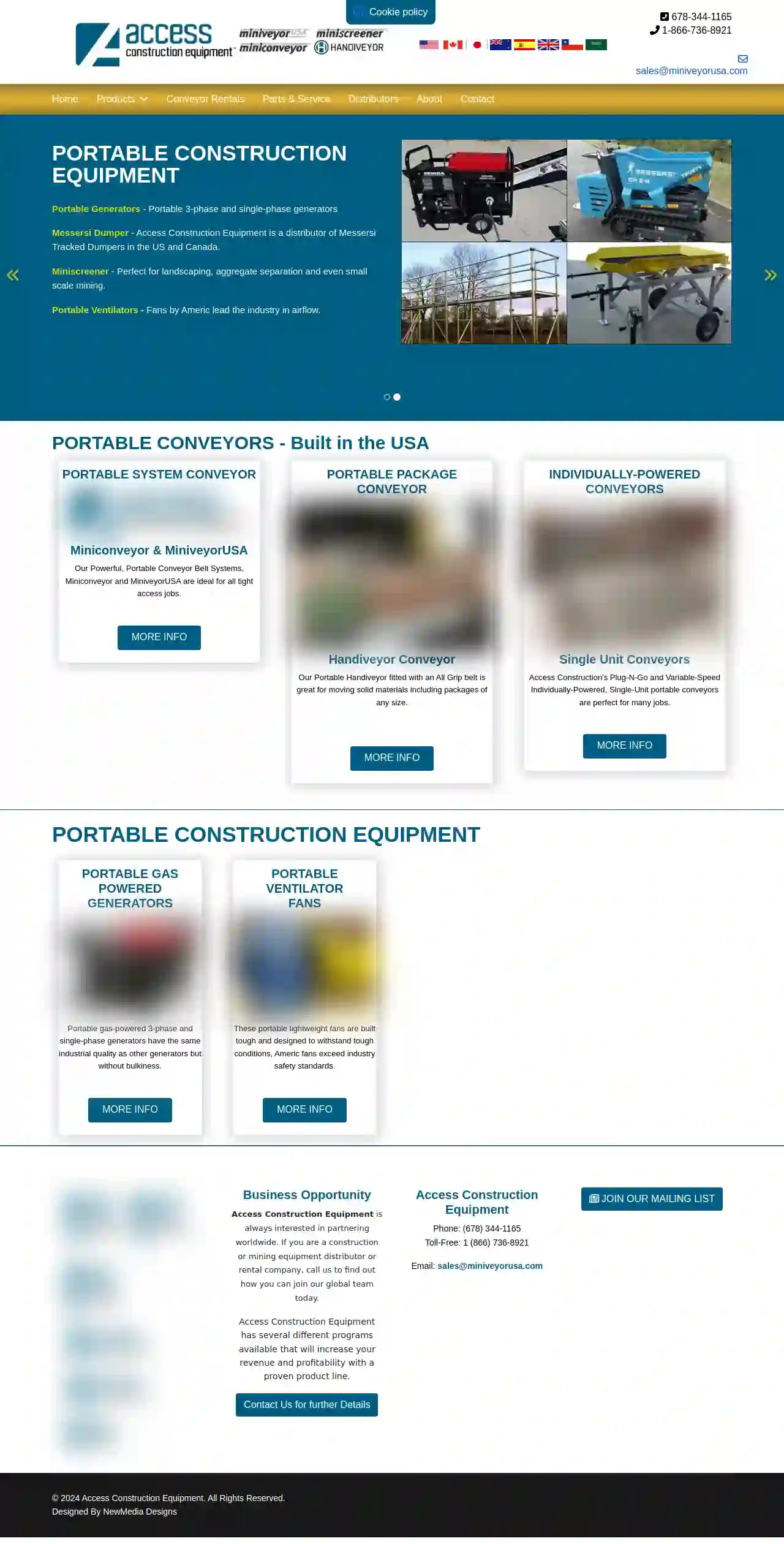
SCAFFOLDING PLATFORMS USA
Stone Mountain, GA, 1980 Parker Court, Ste C, 30087, USScaffolding Platforms USA is a distributor of the LOBO Advanced Platform System, providing a range of products including Work Platform System, Towerstore, Hop Up Platform, Portable Lifting Equipment, Tool Tray, Ladder Guard, and LOBO Gate. The company serves various industries such as Boeing Company, The Walt Disney Company, General Motors, Miller Coors, NASA, and Valero Energy Oil Refinery, among others. With over 15 years in business, Scaffolding Platforms USA is fully accredited and insured, offering a team of experienced professionals dedicated to providing top-quality services and products.
- Services
- Why Us?
- Accreditations
- Gallery
Get Quote
AXIOS Industrial Group - Augusta
42 reviews10077 Grogans Mill Rd, Suite 450, The Woodlands, 77380, USAXIOS Industrial is a leading provider of industrial services, including scaffolding, insulation, coatings, and specialty solutions. With a proven track record of safely providing solutions for turnarounds, capital projects, and routine maintenance, AXIOS is committed to delivering on-time, on-budget results with an uncompromised commitment to workplace health. Our team of experts uses innovative technology to optimize cost, schedule, and quality within the overall project scope. Partner with AXIOS for single-point accountability, unparalleled reliability, lower costs, and maximum value.
- Services
- Why Us?
- Accreditations
- Gallery
Get Quote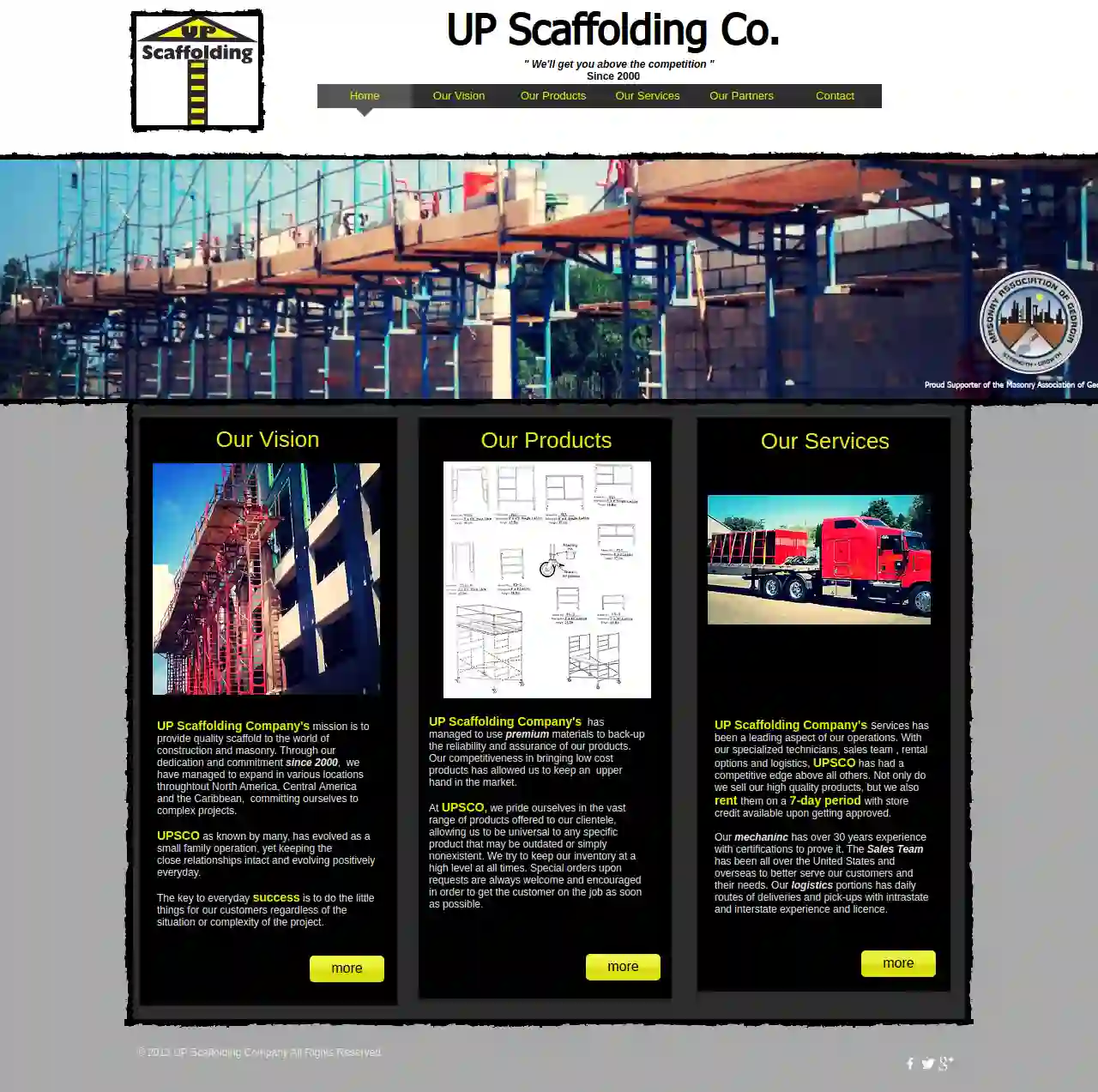
UP Scaffolding Co.
4.224 reviews123 Main St, Norcross, 30092, USUP Scaffolding Company is a leading provider of high-quality scaffolding solutions for the construction and masonry industries. Since 2000, we have been committed to delivering exceptional products and services to our customers. Our mission is to provide reliable and affordable scaffolding solutions that meet the unique needs of our clients. We take pride in our extensive range of products, which are designed to meet the demands of complex projects. Our team of experienced technicians, sales professionals, and logistics experts work together to ensure that our customers receive the best possible service. We offer rental options, store credit, and daily delivery and pickup routes to make it easy for our customers to get the scaffolding they need. At UP Scaffolding Company, we are dedicated to building long-term relationships with our customers. We believe in doing the little things that make a big difference, and we are committed to providing exceptional customer service every day.
- Services
- Why Us?
- Accreditations
- Gallery
Get Quote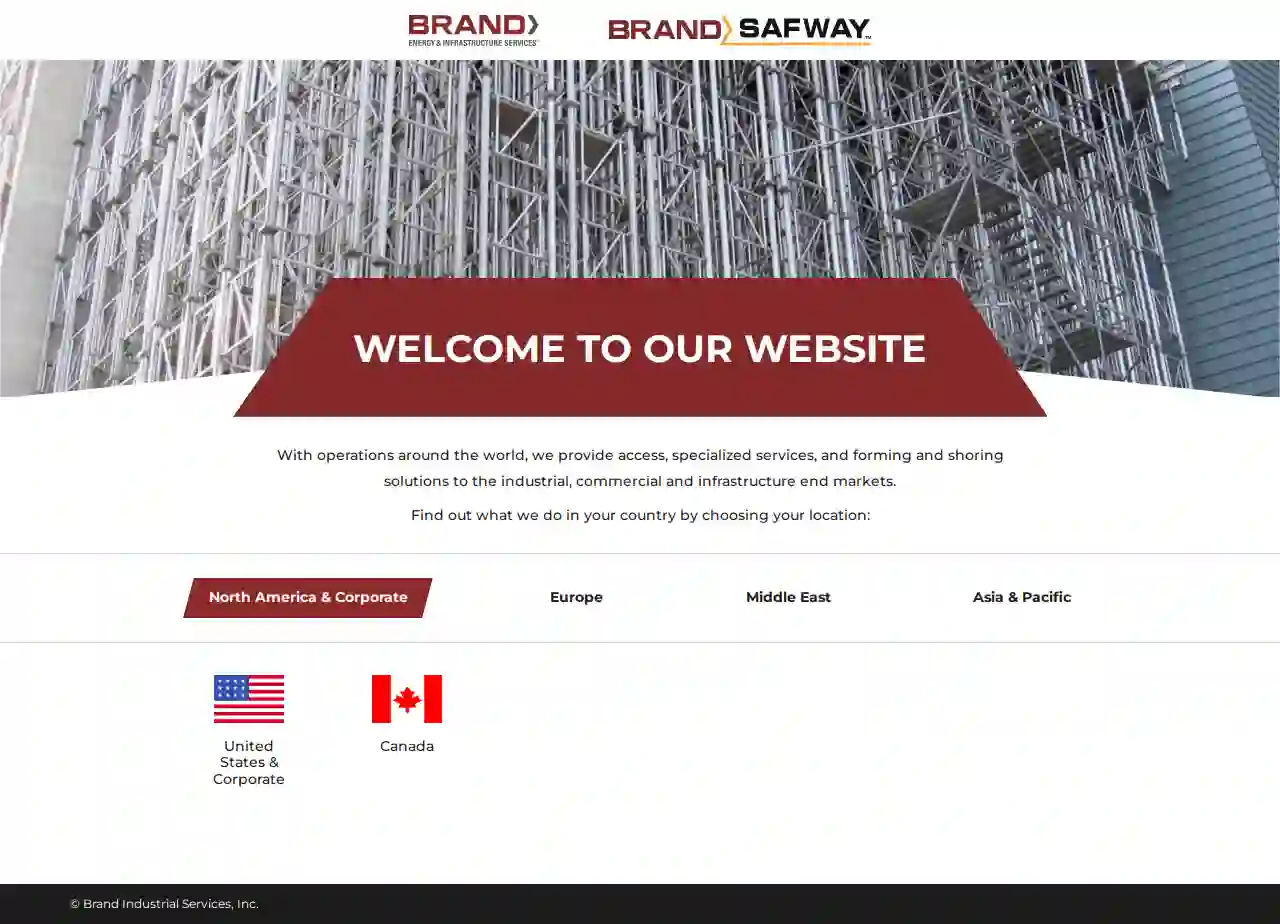
Brand Energy and Infrastructure Services
51 reviewsColumbus, USWelcome to our website. With operations around the world, we provide access, specialized services, and forming and shoring solutions to the industrial, commercial and infrastructure end markets.
- Services
- Why Us?
- Gallery
Get Quote
Maner Builders Supply - Gypsum & Masonry
4.829 reviewsAugusta, USManer Builders Supply is a leading construction supply company serving the Southeast region. Founded in 1951, we have been providing quality construction materials and supplies to builders, developers, and homeowners for over 60 years. Our legacy is built on a commitment to quality, customer service, and community involvement. We offer a wide range of products, including framing, gypsum, finishing, lumber, roofing, doors, and windows. Our team of experts is dedicated to helping you find the right materials for your project, and our flexible delivery and logistics options make it easy to get what you need when you need it. With multiple locations in Augusta, Aiken, and Charleston, we are conveniently located to serve your needs.
- Services
- Why Us?
- Gallery
Get Quote
Over 2,353+ Scaffolding Companies onboarded
Our scaffolding contractors operate in Chamblee & beyond!
ScaffoldingHQ has curated and vetted Top Scaffolding Contractors near Chamblee. Find a top & reliable business today.
Frequently Asked Questions About Scaffolding Companies
- Work at Height Regulations 2005: Covers all work at height and outlines the need for risk assessments, competent erectors, and safe equipment.
- Construction (Design and Management) Regulations 2015 (CDM): Applies to construction projects and requires planning for scaffolding safety throughout the project lifecycle.
- British Standard BS EN 12811: Sets standards for the design, manufacture, and testing of scaffolding components.
- NASC (National Access & Scaffolding Confederation) Guidance: Provides industry best practices and safety recommendations for scaffolding.
- Traditional and highly versatile.
- Components (tubes, clamps, boards) are assembled on-site.
- Adaptable to complex shapes and structures.
- Requires skilled labor and more time for erection.
- Pre-engineered, modular components.
- Faster and easier to erect.
- Often has higher load capacities.
- May be less versatile for complex shapes.
- Online Directories: Use specialized directories like ScaffoldingHQ to search for scaffolding companies in your area.
- Search Engines: Use Google or other search engines to search for 'scaffolding companies near me' or 'scaffolding rental [your location]'.
- Local Construction Associations: Contact local construction associations for recommendations.
- Word-of-Mouth Referrals: Ask friends, family, or colleagues for recommendations based on their past experiences.
- Always Wear a Safety Harness: Connect your harness to a secure anchor point at all times to prevent falls.
- Keep Platforms Clear: Remove tools, materials, and debris to avoid tripping hazards.
- Never Overload the Scaffolding: Stay within the designated weight limits.
- Be Aware of Your Surroundings: Pay attention to power lines, moving equipment, and other potential hazards.
- Inspect Before Use: Check the scaffolding for any damage or defects before starting work.
- Communicate Clearly: Use hand signals and clear communication to coordinate with other workers.
- Follow Safety Training: Attend and understand all safety training provided by your employer or the scaffolding company.
What are the safety regulations for scaffolding in the USA?
What is the difference between tube and clamp scaffolding and system scaffolding?
Tube and Clamp Scaffolding:
How can I find scaffolding companies near me?
What are some tips for working safely on scaffolding?
What are the safety regulations for scaffolding in the USA?
- Work at Height Regulations 2005: Covers all work at height and outlines the need for risk assessments, competent erectors, and safe equipment.
- Construction (Design and Management) Regulations 2015 (CDM): Applies to construction projects and requires planning for scaffolding safety throughout the project lifecycle.
- British Standard BS EN 12811: Sets standards for the design, manufacture, and testing of scaffolding components.
- NASC (National Access & Scaffolding Confederation) Guidance: Provides industry best practices and safety recommendations for scaffolding.
What is the difference between tube and clamp scaffolding and system scaffolding?
Tube and Clamp Scaffolding:
- Traditional and highly versatile.
- Components (tubes, clamps, boards) are assembled on-site.
- Adaptable to complex shapes and structures.
- Requires skilled labor and more time for erection.
- Pre-engineered, modular components.
- Faster and easier to erect.
- Often has higher load capacities.
- May be less versatile for complex shapes.
How can I find scaffolding companies near me?
- Online Directories: Use specialized directories like ScaffoldingHQ to search for scaffolding companies in your area.
- Search Engines: Use Google or other search engines to search for 'scaffolding companies near me' or 'scaffolding rental [your location]'.
- Local Construction Associations: Contact local construction associations for recommendations.
- Word-of-Mouth Referrals: Ask friends, family, or colleagues for recommendations based on their past experiences.
What are some tips for working safely on scaffolding?
- Always Wear a Safety Harness: Connect your harness to a secure anchor point at all times to prevent falls.
- Keep Platforms Clear: Remove tools, materials, and debris to avoid tripping hazards.
- Never Overload the Scaffolding: Stay within the designated weight limits.
- Be Aware of Your Surroundings: Pay attention to power lines, moving equipment, and other potential hazards.
- Inspect Before Use: Check the scaffolding for any damage or defects before starting work.
- Communicate Clearly: Use hand signals and clear communication to coordinate with other workers.
- Follow Safety Training: Attend and understand all safety training provided by your employer or the scaffolding company.